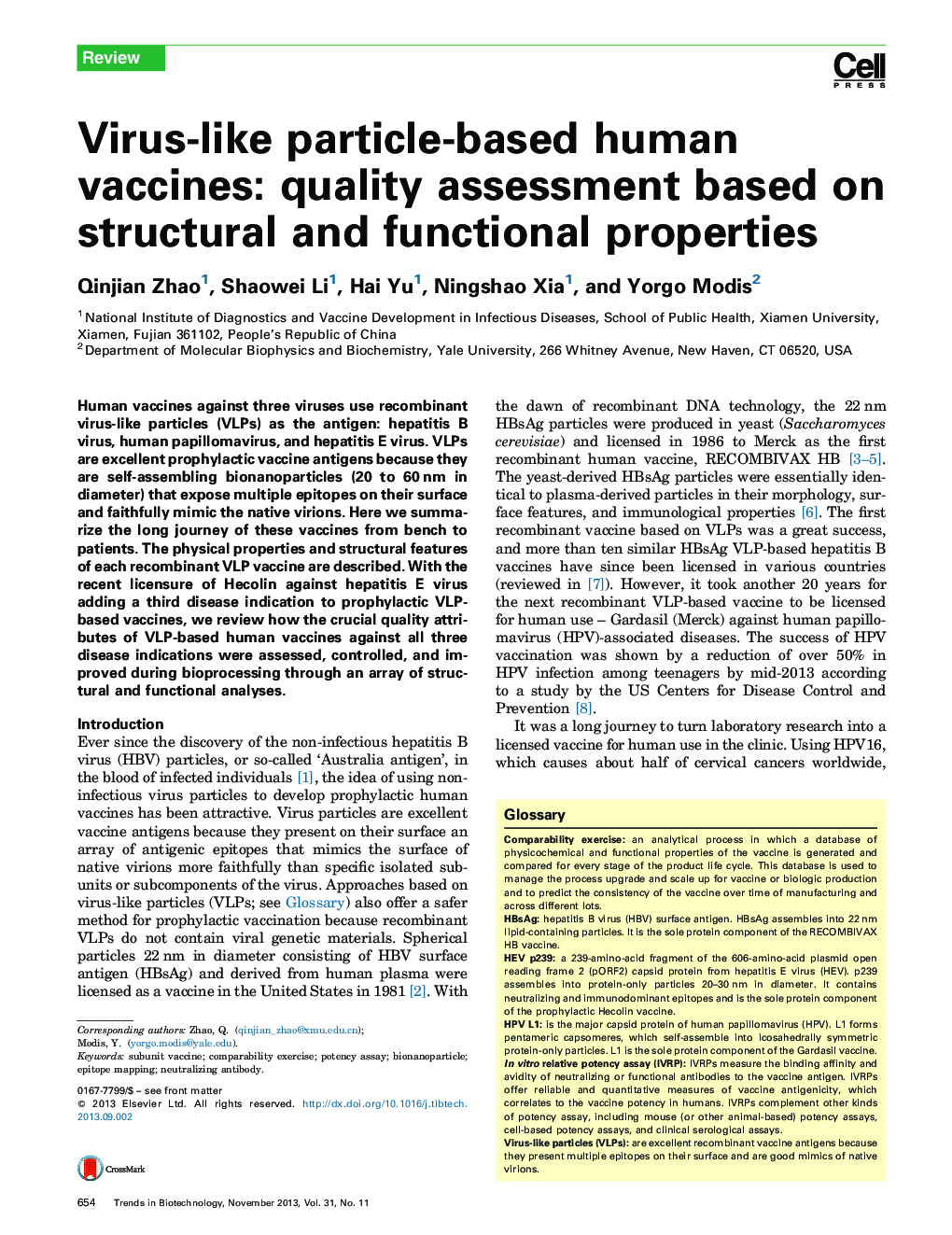| Article ID | Journal | Published Year | Pages | File Type |
|---|---|---|---|---|
| 36874 | Trends in Biotechnology | 2013 | 10 Pages |
•Human vaccines against three viruses employ recombinant virus-like particles (VLPs).•VLPs are excellent vaccine antigens because they faithfully mimic the native virions.•Post-purification reassembly of VLPs can improve antigenicity and vaccine efficacy.•Critical quality attributes of VLPs are assessed to guide vaccine production.
Human vaccines against three viruses use recombinant virus-like particles (VLPs) as the antigen: hepatitis B virus, human papillomavirus, and hepatitis E virus. VLPs are excellent prophylactic vaccine antigens because they are self-assembling bionanoparticles (20 to 60 nm in diameter) that expose multiple epitopes on their surface and faithfully mimic the native virions. Here we summarize the long journey of these vaccines from bench to patients. The physical properties and structural features of each recombinant VLP vaccine are described. With the recent licensure of Hecolin against hepatitis E virus adding a third disease indication to prophylactic VLP-based vaccines, we review how the crucial quality attributes of VLP-based human vaccines against all three disease indications were assessed, controlled, and improved during bioprocessing through an array of structural and functional analyses.
